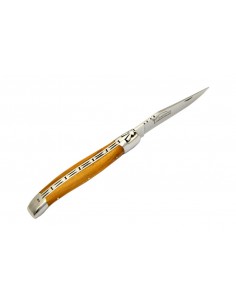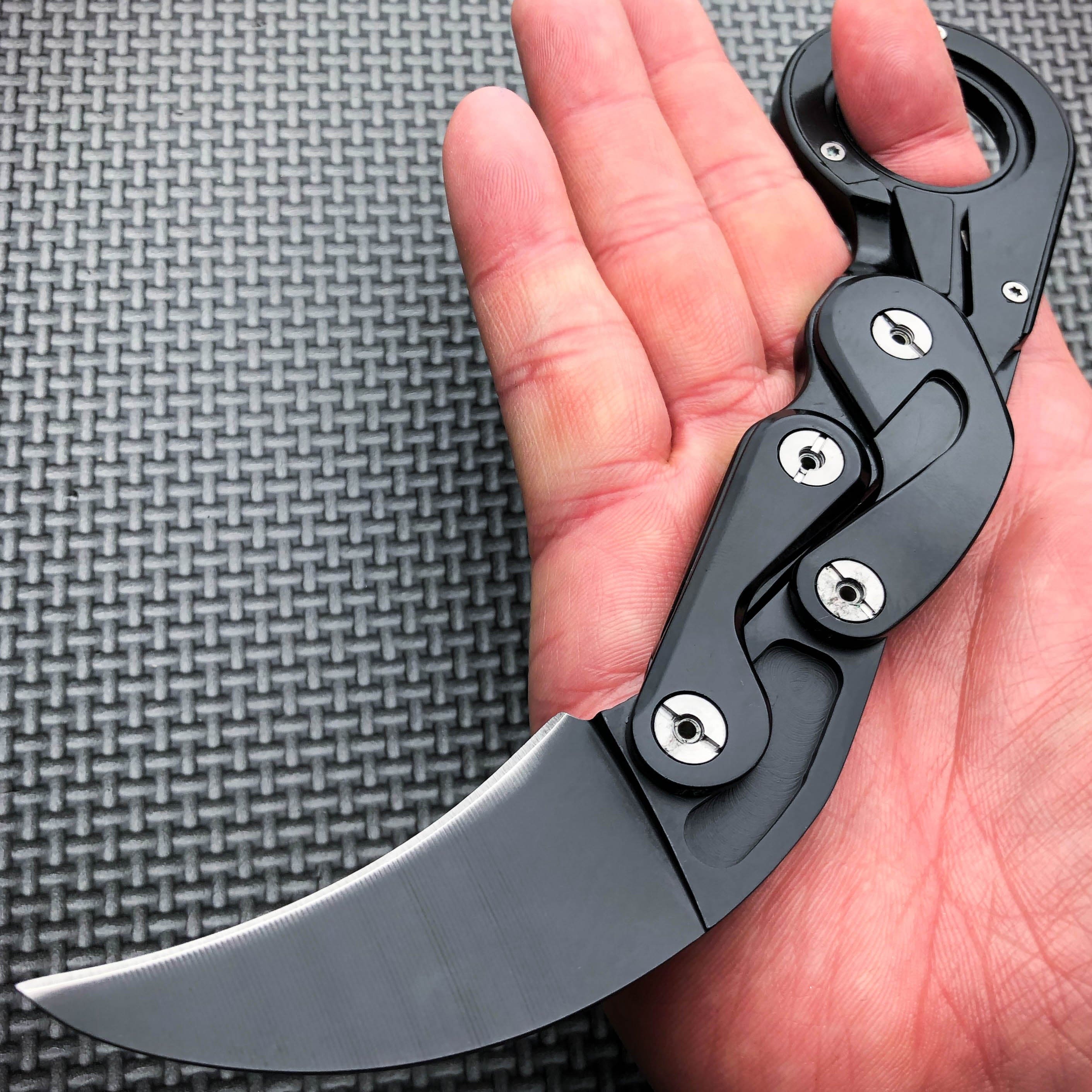
Cold Steel throwing blades come with a paracord-grip and a nylon case. Even though the latter may seem redundant to casual knife-throwers, it's an important feature that people who love throwing knives will appreciate. A lanyard hole should be included in knives. This feature is especially useful for competitors who use knives in competitions.
No-spin technique
To learn the no-spin cold steel knife throwing technique, you need to understand how to draw the knife and hold it with both your hands. To throw the no-spin cold steel knife, your right arm must be lifted with the knife resting on your head. Next, move your weight to the left foot. As you lower your right arm, use your index finger to draw the knife toward your target. Continue this motion till you release the knife.
Another benefit of the no-spin technique is that it is ideal for short-range throws. The no-spin technique doesn't require that you adjust the spin or distance. It can also be used for overhead throws as well. Timing is crucial to your success. The knife must be released at the right time.

420 stainless Steel Blades
Due to its low carbon content, stainless steel 420 is a popular choice for knife throwers. This low carbon content makes the blades of 420 stainless steel incredibly soft. This type of steel has a downside: it must be sharpened frequently. However, it does have some benefits, including its high resistance to corrosion and rust. It is also the best choice when you want to use your knife for diving. 420J stainless steel is the lowest available carbon steel and is also one of the most rust-resistant.
Stainless steel is also an excellent choice because of its ability to resist corrosion and is relatively cheap. It also has good strength and is very durable. Additionally, 420 stainless is very easy to sharpen.
Paracord handle wrappings
Paracord handle wrappings for cold steel knife throwers are made from lightweight nylon ropes. These handle wraps are widely used by law enforcement and civilians. They offer many advantages over bare handles. They improve grip by providing traction to large knives' handles, making them easier to throw and control. In addition, most paracord handle wrappings come with a free sheath, usually made of cordura nylon fiber. This sheath makes it possible to carry your throwing blade in a pocket of on a belt.
Longer handle
Handles are a key consideration when throwing knives at a target. The Cold Steel family of knives is among the best, but it is not the only option available. Cold Steel also manufactures the True Flight Thrower competition thrower. It has a similar design and construction. This thrower also has a composite plastic handle. The blade measures 9 inches and weighs 15.4 ounces.

The best way to choose a throwing tool is to consider your level of skill and personal preference. Multiple knives are preferred by most throwers. Having multiple knives makes it easier to reach the target. A six-blade knife is a good choice for any level of thrower, but you might have to grind it down to a more rounded tip.
Sharp blade
Many of the most expensive knives have broken tips. However, you can repair them with a file. In general, cheaper knives make good throwers. The lighter, smoother blade makes them easier to control. They are good for throwing and no spin. They are also less intimidating than newcomers.
For improved performance, some knives have a hardened blade. Cold Steel Perfect Balance Thrower, inspired by a 1950s classic, features a blade which hits hard and penetrates quickly. A sharp blade and 1055 carbon steel construction make it a perfect thrower. You can replace the blade and use it as a survival tool.
FAQ
How do beginners do self-defense?
Self-defense does not require that you have been trained by an expert. It's also important to know how to defend yourself when you are alone. You should learn some basic moves to protect yourself from an attack.
You can start by practicing simple movements such as punching, kicking, and kneeing. Next, you can learn more advanced moves like grappling as well as joint locks.
It is always useful to practice something that is similar to what you might face in real-life situations. You should try to learn how you can kick someone on a soft surface like a pillow.
So you don't get hurt while practicing. Be careful not to strike anything too hard as you could cause damage.
What does a stun gun do to an attacker?
The stun gun uses electricity in order to incapacitate the victim. It causes muscle contractions which prevent them from moving. They become unable or unwilling to fight back.
Stun guns are most effective when used in the neck and head areas.
The best way to use a stungun is to hit the victim's body until they become unconscious.
Some stun guns make high-pitched sounds that scare off attackers. These stun gun types are called TASERs.
What time does it take for a stun gun to be recharged?
This will vary depending upon the type of battery.
For example, AA batteries can take 2 hours to charge while AAA batteries can take 8 hours.
Can I get arrested for using my stun gun?
No. Stun guns are considered "less lethal" weapons. They are not likely to cause serious injury.
However, charges could still be brought against you if you accidentally hit anyone with your stungun.
What are the advantages of training in martial arts?
Martial arts training will help you to develop skills that can be used in any situation. These skills will help you grow stronger and quicker. They also teach you how to handle different types of attacks.
You will also feel more confident. When you feel safe, you tend to be more relaxed and less stressed.
They are also good for your health. Studies show that regular exercise improves your overall physical condition.
Pepper spray is a great self-defense tool.
Pepper spray is a powerful tool for self defense. It is quick and easy to use. However, you should always practice proper techniques when using pepper spray.
Pepper spray is not recommended as the first line of defense against violent attackers. Call 911 immediately if you are threatened or threatened with violence.
Statistics
- In a January 2018 survey of 1,000 women nationwide, 81 percent reported experiencing some form of sexual harassment, assault, or both in their lifetime. (healthline.com)
- Most likely, the person will want some kind of boxing match, so if you can out-box them, this would be 100% ideal for survival. (budodragon.com)
- Boxers aren't allowed to fight in a clinch, which is a position that occurs in 80% of the streetfights. (mmaclan.com)
- Kung Fu alone has 400 unique martial art styles – and whilst you likely won't be able to find a school for each form, many other martial arts are completely different altogether. (budodragon.com)
External Links
How To
How to use Kubotans for self-defense
Kubotan, or small sticks, are used as weapons by Okinawan masters in martial arts. They were originally made of bamboo, but have been replaced with metal or plastic.
They typically measure between 5cm and 2cm.
The Kubotan can be used to strike at the eyes, nose, or mouth of an opponent. It can also strike other body parts such elbows, knees, and wrists.
Kubotan is popular among women for their light weight, portability, and concealability.
It is important to know the exact spot where you should place the Kubotan stick in order to make it work.
It is important to practice with the Kubotan before you go out in order to hit the right spots.
The following steps will demonstrate how to use Kubotan as a self-defense weapon:
-
Face the attacker
-
Hold the Kubotan firmly between your thumb and index finger.
-
The Kubotan is held above your head by the arm.
-
The Kubotan should be lowered towards the attacker's face.
-
Attack the attacker with a fist.
-
As the Kubotan hits the target, you should see its impact.
-
Continue to swing the Kubotan till you hear a "thwack".
-
Step back and lower the Kubotan.
-
Repeat Steps 1-7 if you wish to keep fighting.